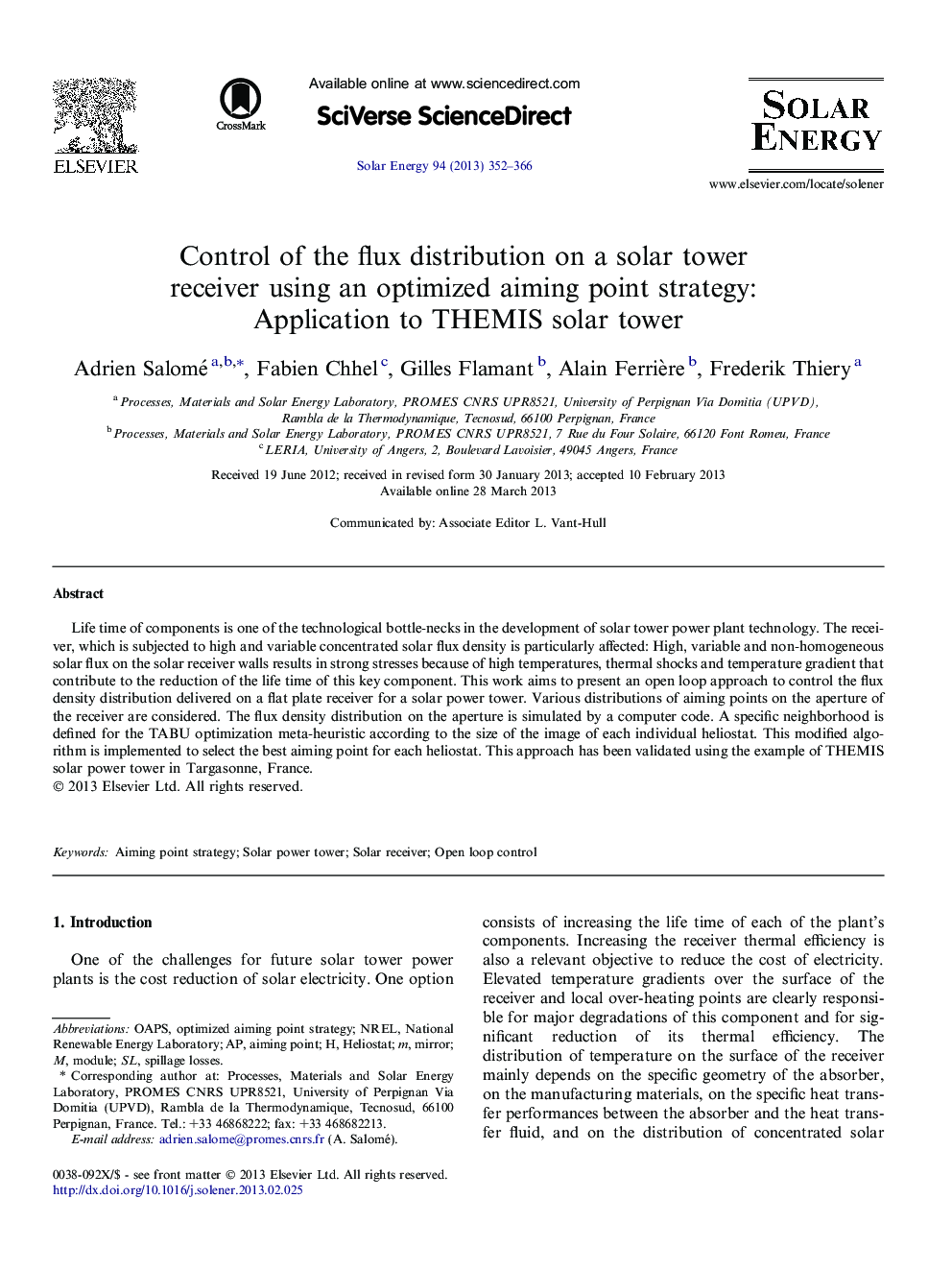| Article ID | Journal | Published Year | Pages | File Type |
|---|---|---|---|---|
| 1550473 | Solar Energy | 2013 | 15 Pages |
•A new open loop control to optimize the flux density distribution on a solar receiver.•A fast tool using HFCAL method to obtain simulated flux density distribution maps.•A fast algorithm using local research TABU for flux density distribution optimization.•A validation of the control process through experiments at THEMIS solar power tower.•A reduction of peak flux and flux spread with limited additional spillage losses.
Life time of components is one of the technological bottle-necks in the development of solar tower power plant technology. The receiver, which is subjected to high and variable concentrated solar flux density is particularly affected: High, variable and non-homogeneous solar flux on the solar receiver walls results in strong stresses because of high temperatures, thermal shocks and temperature gradient that contribute to the reduction of the life time of this key component. This work aims to present an open loop approach to control the flux density distribution delivered on a flat plate receiver for a solar power tower. Various distributions of aiming points on the aperture of the receiver are considered. The flux density distribution on the aperture is simulated by a computer code. A specific neighborhood is defined for the TABU optimization meta-heuristic according to the size of the image of each individual heliostat. This modified algorithm is implemented to select the best aiming point for each heliostat. This approach has been validated using the example of THEMIS solar power tower in Targasonne, France.
